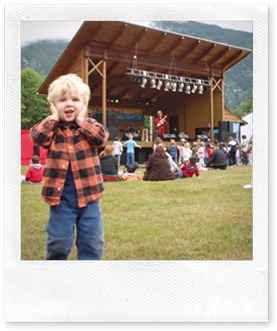This week has been pretty interesting. Much of it comes from recovering from Easter. We are a little outside of our normal routine, especially with a hefty load out, and we are working hard to make sure members of the team can have some recovery time. Vacation or an extra day off, whatever.
 As a result, we hit this weekend with lots of little things undone, making it unpleasant for several volunteers. We started analyzing what went wrong and how we could have prevented them from happening. This is a useful exercise, but I think there is a better way to look at this. Instead of beating ourselves up for what we should have done differently, we should be looking forward to how to prevent something similar from happening again.
As a result, we hit this weekend with lots of little things undone, making it unpleasant for several volunteers. We started analyzing what went wrong and how we could have prevented them from happening. This is a useful exercise, but I think there is a better way to look at this. Instead of beating ourselves up for what we should have done differently, we should be looking forward to how to prevent something similar from happening again.
A process problem
Some of what we experienced this week, was a result of process: an inconsistent process, a less than thorough process, a letting slip of parts of the process that matter.
It is really easy to complain about how the process doesn’t work; in fact I think it is a favorite of most technical artists. The trick is what to do about fixing it for next time. Whether it is in your job description or not, if the current process affects you and your team negatively, how can you contribute to making it what you and your volunteers need?
A knowledge problem
Sometimes things happen that we didn’t plan on, and they aren’t a result of a bad process, but just simply a lack of knowledge. When I first got involved doing production stuff in the local church full time, there was a stretch of time (maybe 6 months) that something went wrong each week, making us start rehearsal late. At a certain point, the music director at my church was like: “what the heck!” The interesting thing about this particular run of problems, was that each one was different. I would learn some new thing, fix it, then the next week something completely different would break.
I learned 2 things here. One is to over-communicate when things are not going well. If something is broken, tell your worship pastor what’s going on. Having them be in the dark is never a good thing. In my example, from the music director’s perspective, the same problem was happening every week: rehearsal was starting late. From my perspective, a completely new problem would happen each week. I just needed to let him know that we had fixed a particular problem, and that a new, unforeseen problem was cropping up the this week.
A knowledge problem leads to a process solution
The other thing I learned was that with each new knowledge problem I tackled, I needed a new process to make sure it didn’t happen again.
In another example with the same music director, I had taken a vacation and had lined up my best volunteers to make the weekends happen. We were meeting in a high school and had 3 semi trailers full of gear to haul over to the school and unload each week. One of our cases would come off the trailer each week to be loaded up with things from our offices and then on Saturday would be put on the trailer to go to the school. On one of these weeks that I was gone, a case that never came off the trailer was taken out and left in the offices. As a result, some key equipment wasn’t available for set up, making rehearsal start late, my music director’s favorite thing.
When I got back from vacation, he lit into me about how could I let something like that happen, and who was to blame and I can never take another vacation over a weekend again.
It dawned on me: how can I plan for something that has never happened before? The answer I came up with is that you can’t plan for something that has never happened. There was no point in wondering how I could have prevented it from happening the first time, since I didn’t even know it could happen. The trick was figuring out how it wouldn’t happen again.
When something happens that you didn’t plan on, it is either a process problem or a knowledge problem that needs to lead to a process change.
The next time something you didn’t plan for happens, don’t dwell on what you should have done different, use your energy to figure out what to do differently next time.








